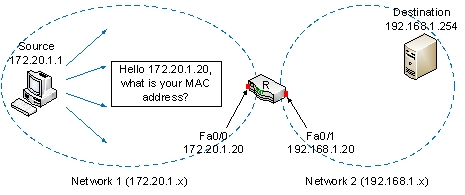A) Switch - layer 3
B) Wireless access point - layer 2
C) Translational bridge - layer 3
D) Hub - layer 2
E) Router - layer 4
Correct Answer

verified
B
Correct Answer
verified
Multiple Choice
The wireless access point must be a ________ device.
A) switch
B) bridge
C) router
D) repeater
E) hub
Correct Answer

verified
Correct Answer
verified
Multiple Choice
Which is INCORRECT about the router?
A) The router uses its routing table to find an optimal delivery path of a packet.
B) Each network segment separated by the router becomes a subnetwork.
C) The router is generally considered as a layer 4 device.
D) Many routers come with both LAN and WAN ports.
E) The router's LAN port should be equipped with both MAC and IP addresses for networking.
Correct Answer

verified
Correct Answer
verified
Multiple Choice
The switch table should contain _____ to forward frames.
A) exit ports and IP addresses
B) IP addresses and MAC addresses
C) MAC addresses and exit ports
D) exit ports and network IDs
E) MAC addresses and network IDs
Correct Answer

verified
Correct Answer
verified
Multiple Choice
The media access protocol, CSMA/CD, is activated by the host station when it is connected to a _____.
A) switch
B) hub
C) bridge
D) either a switch or a hub
E) router
Correct Answer

verified
Correct Answer
verified
Multiple Choice
Switches make switching decisions based on _______.
A) the destination's MAC address in a frame
B) the sender's IP address in a frame
C) the destination's socket in a frame
D) the sender's socket in a frame
E) the sender's MAC address in a frame
Correct Answer

verified
Correct Answer
verified
Multiple Choice
Below table shows status summary of an intermediary device.  -What type of network node should it be?
-What type of network node should it be?
A) Router
B) Switch
C) Bridge
D) Server
E) Hub
Correct Answer

verified
Correct Answer
verified
Multiple Choice
As for switching and routing, choose a CORRECT statement.
A) The internet layer is responsible for packet switching.
B) A logical path between two host stations is pre-determined in switching, making it connection-oriented.
C) The data link layer is responsible for packet routing.
D) A logical path between two host stations is pre-determined in routing, making it connection-oriented.
E) Switching assumes the availability of multiple delivery paths.
Correct Answer

verified
Correct Answer
verified
Multiple Choice
The router may NOT have a built-in _______.
A) CPU
B) random access memory
C) operating system
D) modem
E) LAN or WAN port
Correct Answer

verified
Correct Answer
verified
Multiple Choice
Choose an INCORRECT statement regarding the LAN switch.
A) It has frame collisions oftentimes.
B) It can establish several concurrent connections between any two host stations.
C) Each switch port should be given a unique MAC address to function.
D) When a network runs on switches, the CSMA/CD protocol is disabled in the computer's NIC.
E) The switch is able to broadcast frames if necessary.
Correct Answer

verified
Correct Answer
verified
Multiple Choice
Non-managed and managed switches differ in terms of their ability to
A) change between the switch mode and the router mode.
B) change switch configurations.
C) change between store-and-forward and cut-through switch mode.
D) change between the switch mode and the bridge mode.
E) change between the error detection mode and the non-detection mode.
Correct Answer

verified
Correct Answer
verified
Multiple Choice
Which intermediary device does NOT need its own Operating System (OS) ?
A) Hubs
B) Switches
C) Routers
D) Wireless access points
E) Bridges
Correct Answer

verified
Correct Answer
verified
Multiple Choice
Which is INCORRECT about routers?
A) The router uses its routing table to find an optimal delivery path of an IP packet.
B) Each network separated by the router becomes a broadcast domain.
C) The router generally forwards broadcasted IP packets.
D) Routers generally come with both LAN and WAN ports.
E) The router's LAN port should be given both MAC and IP addresses for networking.
Correct Answer

verified
Correct Answer
verified
Multiple Choice
When switching and routing are compared:
A) Both are data link layer operations.
B) Networks relying on switching can be more vulnerable to a single point of failure than those relying on routing.
C) Both are internet layer operations.
D) Switching is a connection-less, but routing is connection-oriented in forwarding user data.
E) Both switching and routing presume availability of multiple active delivery paths between two hosts.
Correct Answer

Answered by ExamLex AI
B
Correct Answer
Answered by ExamLex AI
Multiple Choice
Collision domains are divided by a:
A) Switch
B) Repeater
C) Router
D) Access point
E) Hub
Correct Answer

verified
Correct Answer
verified
Multiple Choice
Below table must be a(n) ___________ .
A) bridge table
B) switch table
C) address resolution protocol table
D) repeater table
E) hub table
Correct Answer

verified
Correct Answer
verified
Multiple Choice
Imagine a non-blocking Ethernet switch with 24 ports, each port with a speed of 100Mbps. What can be the switch's aggregate throughput?
A) 24 ports
B) 100 Mbps
C) 200 Mbps
D) 2400 Mbps
E) 4800 Mbps
Correct Answer

verified
Correct Answer
verified
Multiple Choice
'Address learning' and 'address aging' must take place in ______ .
A) switches
B) repeaters
C) hubs
D) routers
E) gateways
Correct Answer

verified
A
Correct Answer
verified
Multiple Choice
What protocol is being used by the source computer, 172.20.1.1, in sending out the request? 
A) Domain name system protocol (DNS)
B) Address resolution protocol (ARP)
C) Internet control message protocol (ICMP)
D) Dynamic host configuration protocol (DHCP)
E) MAC resolution protocol (MRP)
Correct Answer

verified
Correct Answer
verified
Multiple Choice
Which is a layer one intermediary device?
A) bridge
B) switch
C) router
D) gateway
E) hub
Correct Answer

verified
Correct Answer
verified
Showing 1 - 20 of 31
Related Exams